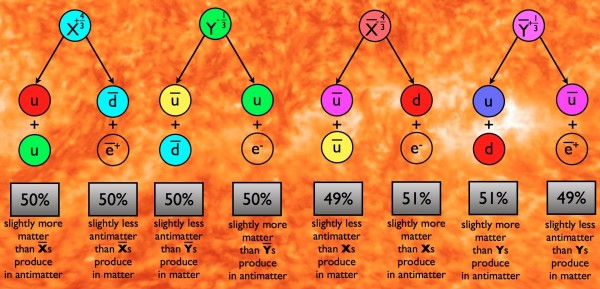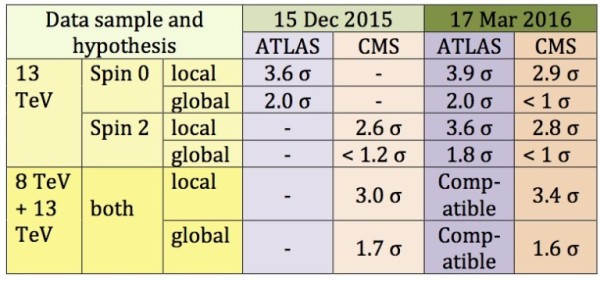"I'm a fan of supersymmetry, largely because it seems to be the only route by which gravity can be brought into the scheme. It's probably not even enough, but it's a way forward to get gravity involved. If you have supersymmetry, then there are more of these particles. That would be my favourite outcome." -Peter Higgs
The Standard Model, in its final form, came into being in the 1960s and 1970s. From the time it was proposed in 1964, it took approximately 50 years for all of the particles within to be discovered, culminating with the discovery of the Higgs Boson a few years ago. Yet a number of puzzles, including dark matter, neutrino masses and the matter-antimatter asymmetry, require new particles that aren't found in the Standard Model to explain them.
 One possible set of new particles that could give rise to the matter-antimatter asymmetry. Image credit: E. Siegel, from his book, Beyond The Galaxy.
One possible set of new particles that could give rise to the matter-antimatter asymmetry. Image credit: E. Siegel, from his book, Beyond The Galaxy.
Scenarios like supersymmetry, extra dimensions and technicolor are perhaps the most interesting, because they might give rise to particles detectable at the LHC. Right now, both the CMS and ATLAS collaborations see excessive signals at ~750 GeV, about 5 times the mass of the Higgs boson. Could this be a new particle? Or, more likely, is it simply a fluctuation in our data given the limited statistics thus far?
 The new signal at 750 GeV, via both the CMS and ATLAS collaborations. Image credit: Pauline Gagnon, via http://www.quantumdiaries.org/2016/03/18/two-steps-closer-to-a-possible….
The new signal at 750 GeV, via both the CMS and ATLAS collaborations. Image credit: Pauline Gagnon, via http://www.quantumdiaries.org/2016/03/18/two-steps-closer-to-a-possible….

Before I write an entire post (mostly questions) this is a test. Just to see if my writing will actually appear.